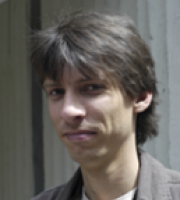MUSICODE's M42 meeting was live on June
2 yrs ago
Karlsruhe Institute of Technology (KIT) is the research university in the Helmholtz association, a member of the top 9 universities in germany, and one of the leading universities for engineering in Europe.
The research focus of the working group at the Institute of Applied Materials (IAM-CMS) of the Karlsruhe Institute of Technology (KIT) is in the field of computer-aided materials research with the special focus on microstructure simulation on high-performance computers and data analysis of material-property relationships. Microstructure simulation as a central link in material modelling has played a key role in material and component development and process optimisation in industry and science over the past decades. The virtual laboratory environment consisting of numerical calculation, comprehensive data analysis and high-resolution visualization provides a modern, time, effort and resource-saving technology for testing materials and components for quality requirements such as load capacity, durability, efficiency and effectiveness.
The in-house software package Pace3D comprises a compendium of 3D algorithms for pre-processing and post-processing of microstructures as well as highly parallel solvers for the use of high-performance computers. On the three German Tier-0 systems SuperMUC (LRZ), Hornet (HLRS) and JUQUEEN (JSC) phase field simulations of multiphase solidification in ternary eutectic alloys were efficiently performed in computational areas with several billion computational cells. The high resolution of the computational area is absolutely necessary to minimize the influence of the area boundary and to reproduce physically relevant effects in the simulation. In addition to the required high resolution, 3D simulations are indispensable for the description of microstructure formations, since neighbourhood relations have a decisive influence on the morphology. The modular structure of the software allows a configuration of the simulation calculations adapted to special requirements of the material system and process. To perform material simulations it is necessary to use suitable initial assignments and parameters. A preprocessing takes over the software-supported generation of area assignments. Experimental data from characterization methods such as microstructure images or measurements as well as simulated data from atomistic or macroscopic calculations can be converted and material properties can be extracted from thermodynamic databases as input variables for the simulation calculations. The challenge of multi-scale modelling has made it possible to model morphologies and material parameters from the atomistic scale to the mesoscopic scale. In the simulation step, the computer environment for the simulation execution is configured. Parallelisation and efficient adaptive algorithms enable the execution of simulations on high-performance computers. Both memory and computational time optimized methods are used to simulate even large areas and thus gain detailed insights into process sequences. The Pace3D package offers an environment to automate the execution of simulation series for parameter study.
 Prof. Britta Nestler (F)
Prof. Britta Nestler (F)
Britta Nestler (born 1972) is a full professor of the Department of Mechanical Engineering at Karlsruhe Institute of Technology (KIT). She holds a double position as a director of both, the Institute of Applied Materials at KIT as well as of the Institute of Digital Materials Science at Karlsruhe University of Applied Sciences HsKA. The direction of research is on microstructure simulation in materials science. She is involved in a variety of European and national research projects, where experts from experiments and computations work together to improve and develop new materials.
 Dr. Michael Selzer (M)
Dr. Michael Selzer (M)
Michael Selzer (born 1976) is working in the group of Prof. Nestler and leads the sustainable software development around Pace3D. As a computer scientist, he was able to gain extensive insights into material sciences during this time, so that he was able to earn his doctorate at the Faculty of Mechanical Engineering at KIT in 2014.